| # |
type |
message |
| 1 |  Routing Routing | connect "/captcha" |
| 2 |  Context Context | initialization |
| 3 |  Controller Controller | initialization |
| 4 |  Routing Routing | match route [na_vif] "/:make/:model/:id" |
| 5 |  Request Request | request parameters array ( 'make' => 'mercedes-benz', 'model' => '280sl-w113', 'id' => '130557', 'module' => 'home', 'action' => 'view',) |
| 6 |  Routing Routing | connect "/sf_cache_partial/:module/:action/:sf_cache_key" |
| 7 |  Creole Creole | connect(): DSN: array ( 'compat_assoc_lower' => '****', 'compat_rtrim_string' => '****', 'database' => '****', 'encoding' => '****', 'hostspec' => '****', 'password' => '****', 'persistent' => '****', 'phptype' => '****', 'port' => '****', 'protocol' => '****', 'socket' => '****', 'username' => '****', ), FLAGS: 0 |
| 8 |  Creole Creole | prepareStatement(): SET time_zone = '+01:00' |
| 9 |  Creole Creole | executeUpdate(): SET time_zone = '+01:00' |
| 10 |  Creole Creole | connect(): DSN: array ( 'compat_assoc_lower' => '****', 'compat_rtrim_string' => '****', 'database' => '****', 'encoding' => '****', 'hostspec' => '****', 'password' => '****', 'persistent' => '****', 'phptype' => '****', 'port' => '****', 'protocol' => '****', 'socket' => '****', 'username' => '****', ), FLAGS: 0 |
| 11 |  Creole Creole | prepareStatement(): SET time_zone = '+01:00' |
| 12 |  Creole Creole | executeUpdate(): SET time_zone = '+01:00' |
| 13 |  Creole Creole | connect(): DSN: array ( 'compat_assoc_lower' => '****', 'compat_rtrim_string' => '****', 'database' => '****', 'encoding' => '****', 'hostspec' => '****', 'password' => '****', 'persistent' => '****', 'phptype' => '****', 'port' => '****', 'protocol' => '****', 'socket' => '****', 'username' => '****', ), FLAGS: 0 |
| 14 |  Creole Creole | prepareStatement(): SET time_zone = '+01:00' |
| 15 |  Creole Creole | executeUpdate(): SET time_zone = '+01:00' |
| 16 |  Creole Creole | connect(): DSN: array ( 'compat_assoc_lower' => '****', 'compat_rtrim_string' => '****', 'database' => '****', 'encoding' => '****', 'hostspec' => '****', 'password' => '****', 'persistent' => '****', 'phptype' => '****', 'port' => '****', 'protocol' => '****', 'socket' => '****', 'username' => '****', ), FLAGS: 0 |
| 17 |  Creole Creole | prepareStatement(): SET time_zone = '+01:00' |
| 18 |  Creole Creole | executeUpdate(): SET time_zone = '+01:00' |
| 19 |  Creole Creole | connect(): DSN: array ( 'compat_assoc_lower' => '****', 'compat_rtrim_string' => '****', 'database' => '****', 'encoding' => '****', 'hostspec' => '****', 'password' => '****', 'persistent' => '****', 'phptype' => '****', 'port' => '****', 'protocol' => '****', 'socket' => '****', 'username' => '****', ), FLAGS: 0 |
| 20 |  Creole Creole | prepareStatement(): SET time_zone = '+01:00' |
| 21 |  Creole Creole | executeUpdate(): SET time_zone = '+01:00' |
| 22 |  Controller Controller | dispatch request |
| 23 |  Filter Filter | executing filter "sfRenderingFilter" |
| 24 |  Filter Filter | executing filter "sfWebDebugFilter" |
| 25 |  Filter Filter | executing filter "sfCarViewFilter" |
| 26 |  Filter Filter | executing filter "naBreadcrumbFilter" |
| 27 |  Filter Filter | executing filter "sfCacheFilter" |
| 28 |  Filter Filter | executing filter "sfCommonFilter" |
| 29 |  Filter Filter | executing filter "sfFlashFilter" |
| 30 |  Filter Filter | executing filter "sfExecutionFilter" |
| 31 |  Action Action | call "homeActions->executeView()" |
| 32 |  Creole Creole | prepareStatement(): SELECT car.ID, car.ID_NETTI_USER, car.ID_MAKE, car.ID_MODEL, car.ID_VEHICLE_TYPE, car.MFG_YEAR, car.MILEAGE, car.ENGINE_SIZE, car.ENGINE_MODEL, car.ID_ACC, car.DEALER_IDENTIFIER, car.CURRENCY, car.PRICE_ASK, car.PRICE_STATUS, car.DRIVE_SIDE, car.FIRST_REG, car.STATUS, car.POSTED_BY, car.STAY_UNKNOWN, car.DATE_CREATE, car.DATE_MODIFY, car.LOCATION, car_info.ID, car_info.ID_CAR, car_info.HOOVER_ID, car_info.REG_NO, car_info.SHOW_REG, car_info.ID_CAR_TYPE, car_info.ID_COLOR, car_info.ID_COLOR_TYPE, car_info.AD_CONDITION, car_info.DOCUMENTED_HISTORY, car_info.COMPETITION_HISTORY, car_info.REGISTERED_VEHICLE, car_info.MANUFACTURE_COUNTRY, car_info.DELIVERY_COUNTRY, car_info.GENERAL_DESCRIPTION, car_info.DOCUMENT_DESCRIPTION, car_info.COMPETITION_DESCRIPTION, car_info.TAGS, car_info.YOUTUBE_VID1, car_info.YOUTUBE_VID2, car_info.NOTE, car_info.REMARK, car_info.SHOW_DATE, car.ID AS ID_AD, UNIX_TIMESTAMP(car.DATE_CREATE) AS ENROLL_DATE, UNIX_TIMESTAMP(car.DATE_MODIFY) AS MODIFY_DATE, DATE_FORMAT(car.DATE_MODIFY,'%d.%m.%Y') AS DM, make.MAKE_EN AS MAKE, model.MODEL_EN AS MODEL, make.MAKE_EN AS MAKE_en, model.MODEL_EN AS MODEL_en, vehicle_type.VEHICLE_TYPE_EN AS VEHICLE_TYPE, car_type.CAR_TYPE_EN AS CAR_TYPE, color.COLOR_EN AS COLOR, color_type.COLOR_TYPE_EN AS COLOR_TYPE, car_stat.HIT_AD_INFO AS AD_HIT FROM car LEFT JOIN car_info ON (car.ID=car_info.ID_CAR) LEFT JOIN make ON (car.ID_MAKE=make.ID) LEFT JOIN model ON (car.ID_MODEL=model.ID) LEFT JOIN vehicle_type ON (car.ID_VEHICLE_TYPE=vehicle_type.ID) LEFT JOIN car_type ON (car_info.ID_CAR_TYPE=car_type.ID) LEFT JOIN color ON (car_info.ID_COLOR=color.ID) LEFT JOIN color_type ON (car_info.ID_COLOR_TYPE=color_type.ID) LEFT JOIN car_stat ON (car.ID=car_stat.ID_AD) WHERE car.ID=? AND car.STATUS=? |
| 33 |  Creole Creole | executeQuery(): [7.20 ms] SELECT car.ID, car.ID_NETTI_USER, car.ID_MAKE, car.ID_MODEL, car.ID_VEHICLE_TYPE, car.MFG_YEAR, car.MILEAGE, car.ENGINE_SIZE, car.ENGINE_MODEL, car.ID_ACC, car.DEALER_IDENTIFIER, car.CURRENCY, car.PRICE_ASK, car.PRICE_STATUS, car.DRIVE_SIDE, car.FIRST_REG, car.STATUS, car.POSTED_BY, car.STAY_UNKNOWN, car.DATE_CREATE, car.DATE_MODIFY, car.LOCATION, car_info.ID, car_info.ID_CAR, car_info.HOOVER_ID, car_info.REG_NO, car_info.SHOW_REG, car_info.ID_CAR_TYPE, car_info.ID_COLOR, car_info.ID_COLOR_TYPE, car_info.AD_CONDITION, car_info.DOCUMENTED_HISTORY, car_info.COMPETITION_HISTORY, car_info.REGISTERED_VEHICLE, car_info.MANUFACTURE_COUNTRY, car_info.DELIVERY_COUNTRY, car_info.GENERAL_DESCRIPTION, car_info.DOCUMENT_DESCRIPTION, car_info.COMPETITION_DESCRIPTION, car_info.TAGS, car_info.YOUTUBE_VID1, car_info.YOUTUBE_VID2, car_info.NOTE, car_info.REMARK, car_info.SHOW_DATE, car.ID AS ID_AD, UNIX_TIMESTAMP(car.DATE_CREATE) AS ENROLL_DATE, UNIX_TIMESTAMP(car.DATE_MODIFY) AS MODIFY_DATE, DATE_FORMAT(car.DATE_MODIFY,'%d.%m.%Y') AS DM, make.MAKE_EN AS MAKE, model.MODEL_EN AS MODEL, make.MAKE_EN AS MAKE_en, model.MODEL_EN AS MODEL_en, vehicle_type.VEHICLE_TYPE_EN AS VEHICLE_TYPE, car_type.CAR_TYPE_EN AS CAR_TYPE, color.COLOR_EN AS COLOR, color_type.COLOR_TYPE_EN AS COLOR_TYPE, car_stat.HIT_AD_INFO AS AD_HIT FROM car LEFT JOIN car_info ON (car.ID=car_info.ID_CAR) LEFT JOIN make ON (car.ID_MAKE=make.ID) LEFT JOIN model ON (car.ID_MODEL=model.ID) LEFT JOIN vehicle_type ON (car.ID_VEHICLE_TYPE=vehicle_type.ID) LEFT JOIN car_type ON (car_info.ID_CAR_TYPE=car_type.ID) LEFT JOIN color ON (car_info.ID_COLOR=color.ID) LEFT JOIN color_type ON (car_info.ID_COLOR_TYPE=color_type.ID) LEFT JOIN car_stat ON (car.ID=car_stat.ID_AD) WHERE car.ID=130557 AND car.STATUS='F' |
| 34 |  Creole Creole | prepareStatement(): SELECT netti_user.ID, netti_user.FNAME, netti_user.LNAME, netti_user.ADDRESS, netti_user.CITY, netti_user.EMAIL, netti_user.PHONE, netti_user.FAX, netti_user.MOBILE, netti_user.EMAIL, netti_user.ZIP, netti_user.CONT_TIME, netti_user.DOMICILE, netti_user.ID_COUNTRY, netti_user.CATEGORY, netti_user.LOGINID FROM netti_user WHERE netti_user.ID IN (?) |
| 35 |  Creole Creole | executeQuery(): [15.66 ms] SELECT netti_user.ID, netti_user.FNAME, netti_user.LNAME, netti_user.ADDRESS, netti_user.CITY, netti_user.EMAIL, netti_user.PHONE, netti_user.FAX, netti_user.MOBILE, netti_user.EMAIL, netti_user.ZIP, netti_user.CONT_TIME, netti_user.DOMICILE, netti_user.ID_COUNTRY, netti_user.CATEGORY, netti_user.LOGINID FROM netti_user WHERE netti_user.ID IN (1036) |
| 36 |  Creole Creole | prepareStatement(): SELECT car.ID, car.ID_NETTI_USER, car.ID_MAKE, car.ID_MODEL, car.ID_VEHICLE_TYPE, car.MFG_YEAR, car.MILEAGE, car.ENGINE_SIZE, car.ENGINE_MODEL, car.ID_ACC, car.DEALER_IDENTIFIER, car.CURRENCY, car.PRICE_ASK, car.PRICE_STATUS, car.DRIVE_SIDE, car.FIRST_REG, car.STATUS, car.POSTED_BY, car.STAY_UNKNOWN, car.DATE_CREATE, car.DATE_MODIFY, car.LOCATION, car_info.ID, car_info.ID_CAR, car_info.HOOVER_ID, car_info.REG_NO, car_info.SHOW_REG, car_info.ID_CAR_TYPE, car_info.ID_COLOR, car_info.ID_COLOR_TYPE, car_info.AD_CONDITION, car_info.DOCUMENTED_HISTORY, car_info.COMPETITION_HISTORY, car_info.REGISTERED_VEHICLE, car_info.MANUFACTURE_COUNTRY, car_info.DELIVERY_COUNTRY, car_info.GENERAL_DESCRIPTION, car_info.DOCUMENT_DESCRIPTION, car_info.COMPETITION_DESCRIPTION, car_info.TAGS, car_info.YOUTUBE_VID1, car_info.YOUTUBE_VID2, car_info.NOTE, car_info.REMARK, car_info.SHOW_DATE, DATE_ADD(car.DATE_MODIFY,INTERVAL 3 DAY) AS DM FROM car LEFT JOIN car_info ON (car.ID=car_info.ID_CAR) WHERE car.ID=? |
| 37 |  Creole Creole | executeQuery(): [14.53 ms] SELECT car.ID, car.ID_NETTI_USER, car.ID_MAKE, car.ID_MODEL, car.ID_VEHICLE_TYPE, car.MFG_YEAR, car.MILEAGE, car.ENGINE_SIZE, car.ENGINE_MODEL, car.ID_ACC, car.DEALER_IDENTIFIER, car.CURRENCY, car.PRICE_ASK, car.PRICE_STATUS, car.DRIVE_SIDE, car.FIRST_REG, car.STATUS, car.POSTED_BY, car.STAY_UNKNOWN, car.DATE_CREATE, car.DATE_MODIFY, car.LOCATION, car_info.ID, car_info.ID_CAR, car_info.HOOVER_ID, car_info.REG_NO, car_info.SHOW_REG, car_info.ID_CAR_TYPE, car_info.ID_COLOR, car_info.ID_COLOR_TYPE, car_info.AD_CONDITION, car_info.DOCUMENTED_HISTORY, car_info.COMPETITION_HISTORY, car_info.REGISTERED_VEHICLE, car_info.MANUFACTURE_COUNTRY, car_info.DELIVERY_COUNTRY, car_info.GENERAL_DESCRIPTION, car_info.DOCUMENT_DESCRIPTION, car_info.COMPETITION_DESCRIPTION, car_info.TAGS, car_info.YOUTUBE_VID1, car_info.YOUTUBE_VID2, car_info.NOTE, car_info.REMARK, car_info.SHOW_DATE, DATE_ADD(car.DATE_MODIFY,INTERVAL 3 DAY) AS DM FROM car LEFT JOIN car_info ON (car.ID=car_info.ID_CAR) WHERE car.ID=130557 |
| 38 |  Creole Creole | prepareStatement(): SELECT COUNT(hoover_check.ID) FROM hoover_check WHERE hoover_check.ID_CAR=? |
| 39 |  Creole Creole | executeQuery(): [2.27 ms] SELECT COUNT(hoover_check.ID) FROM hoover_check WHERE hoover_check.ID_CAR=130557 |
| 40 |  Creole Creole | prepareStatement(): SELECT car_contact.ID, car_contact.ID_AD, car_contact.ID_SOURCE_AD, car_contact.SCODE, car_contact.COMPANY, car_contact.NAME, car_contact.CITY, car_contact.ADDRESS, car_contact.ZIP, car_contact.EMAIL, car_contact.CONT_TIME, car_contact.PHONE, car_contact.MOBILE, car_contact.FAX, car_contact.WEB_URL, car_contact.DATE_CREATE, car_contact.DATE_MODIFY FROM car_contact WHERE car_contact.ID_AD=? |
| 41 |  Creole Creole | executeQuery(): [16.69 ms] SELECT car_contact.ID, car_contact.ID_AD, car_contact.ID_SOURCE_AD, car_contact.SCODE, car_contact.COMPANY, car_contact.NAME, car_contact.CITY, car_contact.ADDRESS, car_contact.ZIP, car_contact.EMAIL, car_contact.CONT_TIME, car_contact.PHONE, car_contact.MOBILE, car_contact.FAX, car_contact.WEB_URL, car_contact.DATE_CREATE, car_contact.DATE_MODIFY FROM car_contact WHERE car_contact.ID_AD=130557 |
| 42 |  Creole Creole | prepareStatement(): SELECT netti_dealer.ID_DEALER, netti_dealer.ID, netti_dealer.PATH, netti_dealer.COMPANY, netti_dealer.SLOGAN, netti_dealer.URL, netti_dealer.SIMPLE_URL, netti_dealer.HAS_SITE FROM netti_dealer WHERE netti_dealer.ID_DEALER IN (?) |
| 43 |  Creole Creole | executeQuery(): [0.55 ms] SELECT netti_dealer.ID_DEALER, netti_dealer.ID, netti_dealer.PATH, netti_dealer.COMPANY, netti_dealer.SLOGAN, netti_dealer.URL, netti_dealer.SIMPLE_URL, netti_dealer.HAS_SITE FROM netti_dealer WHERE netti_dealer.ID_DEALER IN (1036) |
| 44 |  Creole Creole | prepareStatement(): SELECT COUNT(fa_payment_order.ID) FROM fa_payment_order WHERE fa_payment_order.ID_PRODUCT=? AND fa_payment_order.PAYMENT_STATUS=? AND fa_payment_order.UPSELLS_TAKEN=? |
| 45 |  Creole Creole | executeQuery(): [0.65 ms] SELECT COUNT(fa_payment_order.ID) FROM fa_payment_order WHERE fa_payment_order.ID_PRODUCT=130557 AND fa_payment_order.PAYMENT_STATUS='S' AND fa_payment_order.UPSELLS_TAKEN='2' |
| 46 |  Creole Creole | prepareStatement(): SELECT package_type.ID, package_type.TITLE_EN, package_type.DESCRIPTION_EN, package_type.TITLE_DE, package_type.DESCRIPTION_DE, package_type.TITLE_SV, package_type.DESCRIPTION_SV, package_type.PRICE FROM package_type WHERE package_type.ID=? |
| 47 |  Creole Creole | executeQuery(): [0.58 ms] SELECT package_type.ID, package_type.TITLE_EN, package_type.DESCRIPTION_EN, package_type.TITLE_DE, package_type.DESCRIPTION_DE, package_type.TITLE_SV, package_type.DESCRIPTION_SV, package_type.PRICE FROM package_type WHERE package_type.ID='1' |
| 48 |  Creole Creole | prepareStatement(): SELECT carimg.ID, carimg.ID_AD, carimg.PATH, carimg.IMG_HASH, carimg.ORIGINAL, carimg.ORD, carimg.WIDTH, carimg.HEIGHT FROM carimg WHERE carimg.ID_AD IN (130557) ORDER BY carimg.ORD ASC |
| 49 |  Creole Creole | executeQuery(): [0.63 ms] SELECT carimg.ID, carimg.ID_AD, carimg.PATH, carimg.IMG_HASH, carimg.ORIGINAL, carimg.ORD, carimg.WIDTH, carimg.HEIGHT FROM carimg WHERE carimg.ID_AD IN (130557) ORDER BY carimg.ORD ASC |
| 50 |  Creole Creole | prepareStatement(): SELECT netti_user.ID, netti_user.FNAME, netti_user.LNAME, netti_user.ADDRESS, netti_user.CITY, netti_user.EMAIL, netti_user.PHONE, netti_user.FAX, netti_user.MOBILE, netti_user.EMAIL, netti_user.ZIP, netti_user.CONT_TIME, netti_user.DOMICILE, netti_user.ID_COUNTRY, netti_user.CATEGORY, netti_user.LOGINID FROM netti_user WHERE netti_user.ID IN (?) |
| 51 |  Creole Creole | executeQuery(): [0.49 ms] SELECT netti_user.ID, netti_user.FNAME, netti_user.LNAME, netti_user.ADDRESS, netti_user.CITY, netti_user.EMAIL, netti_user.PHONE, netti_user.FAX, netti_user.MOBILE, netti_user.EMAIL, netti_user.ZIP, netti_user.CONT_TIME, netti_user.DOMICILE, netti_user.ID_COUNTRY, netti_user.CATEGORY, netti_user.LOGINID FROM netti_user WHERE netti_user.ID IN (1036) |
| 52 |  Creole Creole | prepareStatement(): SELECT COUNT(dealer_permission.ID) FROM dealer_permission WHERE dealer_permission.ID_DEALER=? AND dealer_permission.WHICH=? |
| 53 |  Creole Creole | executeQuery(): [0.48 ms] SELECT COUNT(dealer_permission.ID) FROM dealer_permission WHERE dealer_permission.ID_DEALER=1036 AND dealer_permission.WHICH='Q' |
| 54 |  Creole Creole | prepareStatement(): SELECT model.ID, model.ID_MAKE, model.MODEL_EN, model.MODEL_DE, model.MODEL_SV, model.DESCRIPTION_EN, model.DESCRIPTION_DE, model.DESCRIPTION_SV, model.COUNTER, model.ORD, model.DATE_CREATE, model.DATE_MODIFY, model.ID_VEHICLE_TYPE, model.ID_DRIVE_TYPE, model.DATE_RANDOM, make.DESCRIPTION_EN AS MAKE_DESC, model.DESCRIPTION_EN AS MODEL_DESC FROM model, make WHERE make.ID=? AND model.ID=? AND make.ID=model.ID_MAKE |
| 55 |  Creole Creole | executeQuery(): [0.59 ms] SELECT model.ID, model.ID_MAKE, model.MODEL_EN, model.MODEL_DE, model.MODEL_SV, model.DESCRIPTION_EN, model.DESCRIPTION_DE, model.DESCRIPTION_SV, model.COUNTER, model.ORD, model.DATE_CREATE, model.DATE_MODIFY, model.ID_VEHICLE_TYPE, model.ID_DRIVE_TYPE, model.DATE_RANDOM, make.DESCRIPTION_EN AS MAKE_DESC, model.DESCRIPTION_EN AS MODEL_DESC FROM model, make WHERE make.ID=112 AND model.ID=1199 AND make.ID=model.ID_MAKE |
| 56 |  Creole Creole | prepareStatement(): ( SELECT car.ID, car.ID_NETTI_USER, car.ID_MAKE, car.ID_MODEL, car.ID_VEHICLE_TYPE, car.MFG_YEAR, car.MILEAGE, car.ENGINE_SIZE, car.ENGINE_MODEL, car.ID_ACC, car.DEALER_IDENTIFIER, car.CURRENCY, car.PRICE_ASK, car.PRICE_STATUS, car.DRIVE_SIDE, car.FIRST_REG, car.STATUS, car.POSTED_BY, car.STAY_UNKNOWN, car.DATE_CREATE, car.DATE_MODIFY, car.LOCATION, car.ID AS ID_AD, UNIX_TIMESTAMP(car.DATE_CREATE) AS ENROLL_DATE, UNIX_TIMESTAMP(car.DATE_MODIFY) AS MODIFY_DATE, car_info.ID_CAR_TYPE AS ID_CAR_TYPE, car_info.GENERAL_DESCRIPTION AS GENERAL_DESCRIPTION, car_info.DOCUMENT_DESCRIPTION AS DOCUMENT_DESCRIPTION, car_info.COMPETITION_DESCRIPTION AS COMPETITION_DESCRIPTION, car_info.NOTE FROM cd_cars.car LEFT JOIN cd_cars.make ON (car.ID_MAKE=make.ID) LEFT JOIN cd_cars.model ON (car.ID_MODEL=model.ID) LEFT JOIN cd_cars.car_info ON (car.ID=car_info.ID_CAR) WHERE car.status = 'F' AND car.ID != 130557 AND car.ID_MODEL = '1199' ) UNION ( SELECT car.ID, car.ID_NETTI_USER, car.ID_MAKE, car.ID_MODEL, car.ID_VEHICLE_TYPE, car.MFG_YEAR, car.MILEAGE, car.ENGINE_SIZE, car.ENGINE_MODEL, car.ID_ACC, car.DEALER_IDENTIFIER, car.CURRENCY, car.PRICE_ASK, car.PRICE_STATUS, car.DRIVE_SIDE, car.FIRST_REG, car.STATUS, car.POSTED_BY, car.STAY_UNKNOWN, car.DATE_CREATE, car.DATE_MODIFY, car.LOCATION, car.ID AS ID_AD, UNIX_TIMESTAMP(car.DATE_CREATE) AS ENROLL_DATE, UNIX_TIMESTAMP(car.DATE_MODIFY) AS MODIFY_DATE, car_info.ID_CAR_TYPE AS ID_CAR_TYPE, car_info.GENERAL_DESCRIPTION AS GENERAL_DESCRIPTION, car_info.DOCUMENT_DESCRIPTION AS DOCUMENT_DESCRIPTION, car_info.COMPETITION_DESCRIPTION AS COMPETITION_DESCRIPTION, car_info.NOTE FROM cd_cars.sold_car as car LEFT JOIN cd_cars.make ON (car.ID_MAKE=make.ID) LEFT JOIN cd_cars.model ON (car.ID_MODEL=model.ID) LEFT JOIN cd_cars.sold_car_info as car_info ON (car.ID=car_info.ID_CAR) WHERE car.status = 'S' and car.date_modify > DATE_SUB(NOW(), INTERVAL 1 WEEK) AND car.ID != 130557 AND car.ID_MODEL = '1199' ) ORDER BY ID DESC |
| 57 |  Creole Creole | prepareStatement(): SELECT COUNT( * ) AS count FROM ( ( SELECT car.id FROM cd_cars.car LEFT JOIN cd_cars.make ON (car.ID_MAKE=make.ID) LEFT JOIN cd_cars.model ON (car.ID_MODEL=model.ID) LEFT JOIN cd_cars.car_info ON (car.ID=car_info.ID_CAR) WHERE car.status = 'F' AND car.ID != 130557 AND car.ID_MODEL = '1199' ) UNION ( SELECT car.id FROM cd_cars.sold_car as car LEFT JOIN cd_cars.make ON (car.ID_MAKE=make.ID) LEFT JOIN cd_cars.model ON (car.ID_MODEL=model.ID) LEFT JOIN cd_cars.sold_car_info as car_info ON (car.ID=car_info.ID_CAR) WHERE car.status = 'S' and car.date_modify > DATE_SUB(NOW(), INTERVAL 1 WEEK) AND car.ID != 130557 AND car.ID_MODEL = '1199' ) ) AS count |
| 58 |  Creole Creole | executeQuery(): [5.20 ms] SELECT COUNT( * ) AS count FROM ( ( SELECT car.id FROM cd_cars.car LEFT JOIN cd_cars.make ON (car.ID_MAKE=make.ID) LEFT JOIN cd_cars.model ON (car.ID_MODEL=model.ID) LEFT JOIN cd_cars.car_info ON (car.ID=car_info.ID_CAR) WHERE car.status = 'F' AND car.ID != 130557 AND car.ID_MODEL = '1199' ) UNION ( SELECT car.id FROM cd_cars.sold_car as car LEFT JOIN cd_cars.make ON (car.ID_MAKE=make.ID) LEFT JOIN cd_cars.model ON (car.ID_MODEL=model.ID) LEFT JOIN cd_cars.sold_car_info as car_info ON (car.ID=car_info.ID_CAR) WHERE car.status = 'S' and car.date_modify > DATE_SUB(NOW(), INTERVAL 1 WEEK) AND car.ID != 130557 AND car.ID_MODEL = '1199' ) ) AS count |
| 59 |  Creole Creole | applyLimit(): ( SELECT car.ID, car.ID_NETTI_USER, car.ID_MAKE, car.ID_MODEL, car.ID_VEHICLE_TYPE, car.MFG_YEAR, car.MILEAGE, car.ENGINE_SIZE, car.ENGINE_MODEL, car.ID_ACC, car.DEALER_IDENTIFIER, car.CURRENCY, car.PRICE_ASK, car.PRICE_STATUS, car.DRIVE_SIDE, car.FIRST_REG, car.STATUS, car.POSTED_BY, car.STAY_UNKNOWN, car.DATE_CREATE, car.DATE_MODIFY, car.LOCATION, car.ID AS ID_AD, UNIX_TIMESTAMP(car.DATE_CREATE) AS ENROLL_DATE, UNIX_TIMESTAMP(car.DATE_MODIFY) AS MODIFY_DATE, car_info.ID_CAR_TYPE AS ID_CAR_TYPE, car_info.GENERAL_DESCRIPTION AS GENERAL_DESCRIPTION, car_info.DOCUMENT_DESCRIPTION AS DOCUMENT_DESCRIPTION, car_info.COMPETITION_DESCRIPTION AS COMPETITION_DESCRIPTION, car_info.NOTE FROM cd_cars.car LEFT JOIN cd_cars.make ON (car.ID_MAKE=make.ID) LEFT JOIN cd_cars.model ON (car.ID_MODEL=model.ID) LEFT JOIN cd_cars.car_info ON (car.ID=car_info.ID_CAR) WHERE car.status = 'F' AND car.ID != 130557 AND car.ID_MODEL = '1199' ) UNION ( SELECT car.ID, car.ID_NETTI_USER, car.ID_MAKE, car.ID_MODEL, car.ID_VEHICLE_TYPE, car.MFG_YEAR, car.MILEAGE, car.ENGINE_SIZE, car.ENGINE_MODEL, car.ID_ACC, car.DEALER_IDENTIFIER, car.CURRENCY, car.PRICE_ASK, car.PRICE_STATUS, car.DRIVE_SIDE, car.FIRST_REG, car.STATUS, car.POSTED_BY, car.STAY_UNKNOWN, car.DATE_CREATE, car.DATE_MODIFY, car.LOCATION, car.ID AS ID_AD, UNIX_TIMESTAMP(car.DATE_CREATE) AS ENROLL_DATE, UNIX_TIMESTAMP(car.DATE_MODIFY) AS MODIFY_DATE, car_info.ID_CAR_TYPE AS ID_CAR_TYPE, car_info.GENERAL_DESCRIPTION AS GENERAL_DESCRIPTION, car_info.DOCUMENT_DESCRIPTION AS DOCUMENT_DESCRIPTION, car_info.COMPETITION_DESCRIPTION AS COMPETITION_DESCRIPTION, car_info.NOTE FROM cd_cars.sold_car as car LEFT JOIN cd_cars.make ON (car.ID_MAKE=make.ID) LEFT JOIN cd_cars.model ON (car.ID_MODEL=model.ID) LEFT JOIN cd_cars.sold_car_info as car_info ON (car.ID=car_info.ID_CAR) WHERE car.status = 'S' and car.date_modify > DATE_SUB(NOW(), INTERVAL 1 WEEK) AND car.ID != 130557 AND car.ID_MODEL = '1199' ) ORDER BY ID DESC, offset: 0, limit: 5 |
| 60 |  Creole Creole | executeQuery(): [8.94 ms] ( SELECT car.ID, car.ID_NETTI_USER, car.ID_MAKE, car.ID_MODEL, car.ID_VEHICLE_TYPE, car.MFG_YEAR, car.MILEAGE, car.ENGINE_SIZE, car.ENGINE_MODEL, car.ID_ACC, car.DEALER_IDENTIFIER, car.CURRENCY, car.PRICE_ASK, car.PRICE_STATUS, car.DRIVE_SIDE, car.FIRST_REG, car.STATUS, car.POSTED_BY, car.STAY_UNKNOWN, car.DATE_CREATE, car.DATE_MODIFY, car.LOCATION, car.ID AS ID_AD, UNIX_TIMESTAMP(car.DATE_CREATE) AS ENROLL_DATE, UNIX_TIMESTAMP(car.DATE_MODIFY) AS MODIFY_DATE, car_info.ID_CAR_TYPE AS ID_CAR_TYPE, car_info.GENERAL_DESCRIPTION AS GENERAL_DESCRIPTION, car_info.DOCUMENT_DESCRIPTION AS DOCUMENT_DESCRIPTION, car_info.COMPETITION_DESCRIPTION AS COMPETITION_DESCRIPTION, car_info.NOTE FROM cd_cars.car LEFT JOIN cd_cars.make ON (car.ID_MAKE=make.ID) LEFT JOIN cd_cars.model ON (car.ID_MODEL=model.ID) LEFT JOIN cd_cars.car_info ON (car.ID=car_info.ID_CAR) WHERE car.status = 'F' AND car.ID != 130557 AND car.ID_MODEL = '1199' ) UNION ( SELECT car.ID, car.ID_NETTI_USER, car.ID_MAKE, car.ID_MODEL, car.ID_VEHICLE_TYPE, car.MFG_YEAR, car.MILEAGE, car.ENGINE_SIZE, car.ENGINE_MODEL, car.ID_ACC, car.DEALER_IDENTIFIER, car.CURRENCY, car.PRICE_ASK, car.PRICE_STATUS, car.DRIVE_SIDE, car.FIRST_REG, car.STATUS, car.POSTED_BY, car.STAY_UNKNOWN, car.DATE_CREATE, car.DATE_MODIFY, car.LOCATION, car.ID AS ID_AD, UNIX_TIMESTAMP(car.DATE_CREATE) AS ENROLL_DATE, UNIX_TIMESTAMP(car.DATE_MODIFY) AS MODIFY_DATE, car_info.ID_CAR_TYPE AS ID_CAR_TYPE, car_info.GENERAL_DESCRIPTION AS GENERAL_DESCRIPTION, car_info.DOCUMENT_DESCRIPTION AS DOCUMENT_DESCRIPTION, car_info.COMPETITION_DESCRIPTION AS COMPETITION_DESCRIPTION, car_info.NOTE FROM cd_cars.sold_car as car LEFT JOIN cd_cars.make ON (car.ID_MAKE=make.ID) LEFT JOIN cd_cars.model ON (car.ID_MODEL=model.ID) LEFT JOIN cd_cars.sold_car_info as car_info ON (car.ID=car_info.ID_CAR) WHERE car.status = 'S' and car.date_modify > DATE_SUB(NOW(), INTERVAL 1 WEEK) AND car.ID != 130557 AND car.ID_MODEL = '1199' ) ORDER BY ID DESC LIMIT 5 |
| 61 |  Creole Creole | prepareStatement(): SELECT carimg.ID, carimg.ID_AD, carimg.PATH, carimg.IMG_HASH, carimg.ORIGINAL, carimg.ORD, carimg.WIDTH, carimg.HEIGHT FROM carimg WHERE carimg.ID_AD IN (199380,199123,195813,195659,195592) ORDER BY carimg.ORD ASC |
| 62 |  Creole Creole | executeQuery(): [1.00 ms] SELECT carimg.ID, carimg.ID_AD, carimg.PATH, carimg.IMG_HASH, carimg.ORIGINAL, carimg.ORD, carimg.WIDTH, carimg.HEIGHT FROM carimg WHERE carimg.ID_AD IN (199380,199123,195813,195659,195592) ORDER BY carimg.ORD ASC |
| 63 |  Creole Creole | prepareStatement(): ( SELECT car.ID, car.ID_NETTI_USER, car.ID_MAKE, car.ID_MODEL, car.ID_VEHICLE_TYPE, car.MFG_YEAR, car.MILEAGE, car.ENGINE_SIZE, car.ENGINE_MODEL, car.ID_ACC, car.DEALER_IDENTIFIER, car.CURRENCY, car.PRICE_ASK, car.PRICE_STATUS, car.DRIVE_SIDE, car.FIRST_REG, car.STATUS, car.POSTED_BY, car.STAY_UNKNOWN, car.DATE_CREATE, car.DATE_MODIFY, car.LOCATION, car.ID AS ID_AD, UNIX_TIMESTAMP(car.DATE_CREATE) AS ENROLL_DATE, UNIX_TIMESTAMP(car.DATE_MODIFY) AS MODIFY_DATE, car_info.ID_CAR_TYPE AS ID_CAR_TYPE, car_info.GENERAL_DESCRIPTION AS GENERAL_DESCRIPTION, car_info.DOCUMENT_DESCRIPTION AS DOCUMENT_DESCRIPTION, car_info.COMPETITION_DESCRIPTION AS COMPETITION_DESCRIPTION, car_info.NOTE FROM cd_cars.car LEFT JOIN cd_cars.make ON (car.ID_MAKE=make.ID) LEFT JOIN cd_cars.model ON (car.ID_MODEL=model.ID) LEFT JOIN cd_cars.car_info ON (car.ID=car_info.ID_CAR) WHERE car.status = 'F' AND car.ID != '130557' AND car.ID_NETTI_USER = '1036' ) UNION ( SELECT car.ID, car.ID_NETTI_USER, car.ID_MAKE, car.ID_MODEL, car.ID_VEHICLE_TYPE, car.MFG_YEAR, car.MILEAGE, car.ENGINE_SIZE, car.ENGINE_MODEL, car.ID_ACC, car.DEALER_IDENTIFIER, car.CURRENCY, car.PRICE_ASK, car.PRICE_STATUS, car.DRIVE_SIDE, car.FIRST_REG, car.STATUS, car.POSTED_BY, car.STAY_UNKNOWN, car.DATE_CREATE, car.DATE_MODIFY, car.LOCATION, car.ID AS ID_AD, UNIX_TIMESTAMP(car.DATE_CREATE) AS ENROLL_DATE, UNIX_TIMESTAMP(car.DATE_MODIFY) AS MODIFY_DATE, car_info.ID_CAR_TYPE AS ID_CAR_TYPE, car_info.GENERAL_DESCRIPTION AS GENERAL_DESCRIPTION, car_info.DOCUMENT_DESCRIPTION AS DOCUMENT_DESCRIPTION, car_info.COMPETITION_DESCRIPTION AS COMPETITION_DESCRIPTION, car_info.NOTE FROM cd_cars.sold_car as car LEFT JOIN cd_cars.make ON (car.ID_MAKE=make.ID) LEFT JOIN cd_cars.model ON (car.ID_MODEL=model.ID) LEFT JOIN cd_cars.sold_car_info as car_info ON (car.ID=car_info.ID_CAR) WHERE car.status = 'S' and car.date_modify > DATE_SUB(NOW(), INTERVAL 1 WEEK) AND car.ID != '130557' AND car.ID_NETTI_USER = '1036' ) ORDER BY ID DESC |
| 64 |  Creole Creole | prepareStatement(): SELECT COUNT( * ) AS count FROM ( ( SELECT car.id FROM cd_cars.car LEFT JOIN cd_cars.make ON (car.ID_MAKE=make.ID) LEFT JOIN cd_cars.model ON (car.ID_MODEL=model.ID) LEFT JOIN cd_cars.car_info ON (car.ID=car_info.ID_CAR) WHERE car.status = 'F' AND car.ID != '130557' AND car.ID_NETTI_USER = '1036' ) UNION ( SELECT car.id FROM cd_cars.sold_car as car LEFT JOIN cd_cars.make ON (car.ID_MAKE=make.ID) LEFT JOIN cd_cars.model ON (car.ID_MODEL=model.ID) LEFT JOIN cd_cars.sold_car_info as car_info ON (car.ID=car_info.ID_CAR) WHERE car.status = 'S' and car.date_modify > DATE_SUB(NOW(), INTERVAL 1 WEEK) AND car.ID != '130557' AND car.ID_NETTI_USER = '1036' ) ) AS count |
| 65 |  Creole Creole | executeQuery(): [1.87 ms] SELECT COUNT( * ) AS count FROM ( ( SELECT car.id FROM cd_cars.car LEFT JOIN cd_cars.make ON (car.ID_MAKE=make.ID) LEFT JOIN cd_cars.model ON (car.ID_MODEL=model.ID) LEFT JOIN cd_cars.car_info ON (car.ID=car_info.ID_CAR) WHERE car.status = 'F' AND car.ID != '130557' AND car.ID_NETTI_USER = '1036' ) UNION ( SELECT car.id FROM cd_cars.sold_car as car LEFT JOIN cd_cars.make ON (car.ID_MAKE=make.ID) LEFT JOIN cd_cars.model ON (car.ID_MODEL=model.ID) LEFT JOIN cd_cars.sold_car_info as car_info ON (car.ID=car_info.ID_CAR) WHERE car.status = 'S' and car.date_modify > DATE_SUB(NOW(), INTERVAL 1 WEEK) AND car.ID != '130557' AND car.ID_NETTI_USER = '1036' ) ) AS count |
| 66 |  Creole Creole | applyLimit(): ( SELECT car.ID, car.ID_NETTI_USER, car.ID_MAKE, car.ID_MODEL, car.ID_VEHICLE_TYPE, car.MFG_YEAR, car.MILEAGE, car.ENGINE_SIZE, car.ENGINE_MODEL, car.ID_ACC, car.DEALER_IDENTIFIER, car.CURRENCY, car.PRICE_ASK, car.PRICE_STATUS, car.DRIVE_SIDE, car.FIRST_REG, car.STATUS, car.POSTED_BY, car.STAY_UNKNOWN, car.DATE_CREATE, car.DATE_MODIFY, car.LOCATION, car.ID AS ID_AD, UNIX_TIMESTAMP(car.DATE_CREATE) AS ENROLL_DATE, UNIX_TIMESTAMP(car.DATE_MODIFY) AS MODIFY_DATE, car_info.ID_CAR_TYPE AS ID_CAR_TYPE, car_info.GENERAL_DESCRIPTION AS GENERAL_DESCRIPTION, car_info.DOCUMENT_DESCRIPTION AS DOCUMENT_DESCRIPTION, car_info.COMPETITION_DESCRIPTION AS COMPETITION_DESCRIPTION, car_info.NOTE FROM cd_cars.car LEFT JOIN cd_cars.make ON (car.ID_MAKE=make.ID) LEFT JOIN cd_cars.model ON (car.ID_MODEL=model.ID) LEFT JOIN cd_cars.car_info ON (car.ID=car_info.ID_CAR) WHERE car.status = 'F' AND car.ID != '130557' AND car.ID_NETTI_USER = '1036' ) UNION ( SELECT car.ID, car.ID_NETTI_USER, car.ID_MAKE, car.ID_MODEL, car.ID_VEHICLE_TYPE, car.MFG_YEAR, car.MILEAGE, car.ENGINE_SIZE, car.ENGINE_MODEL, car.ID_ACC, car.DEALER_IDENTIFIER, car.CURRENCY, car.PRICE_ASK, car.PRICE_STATUS, car.DRIVE_SIDE, car.FIRST_REG, car.STATUS, car.POSTED_BY, car.STAY_UNKNOWN, car.DATE_CREATE, car.DATE_MODIFY, car.LOCATION, car.ID AS ID_AD, UNIX_TIMESTAMP(car.DATE_CREATE) AS ENROLL_DATE, UNIX_TIMESTAMP(car.DATE_MODIFY) AS MODIFY_DATE, car_info.ID_CAR_TYPE AS ID_CAR_TYPE, car_info.GENERAL_DESCRIPTION AS GENERAL_DESCRIPTION, car_info.DOCUMENT_DESCRIPTION AS DOCUMENT_DESCRIPTION, car_info.COMPETITION_DESCRIPTION AS COMPETITION_DESCRIPTION, car_info.NOTE FROM cd_cars.sold_car as car LEFT JOIN cd_cars.make ON (car.ID_MAKE=make.ID) LEFT JOIN cd_cars.model ON (car.ID_MODEL=model.ID) LEFT JOIN cd_cars.sold_car_info as car_info ON (car.ID=car_info.ID_CAR) WHERE car.status = 'S' and car.date_modify > DATE_SUB(NOW(), INTERVAL 1 WEEK) AND car.ID != '130557' AND car.ID_NETTI_USER = '1036' ) ORDER BY ID DESC, offset: 0, limit: 5 |
| 67 |  Creole Creole | executeQuery(): [2.78 ms] ( SELECT car.ID, car.ID_NETTI_USER, car.ID_MAKE, car.ID_MODEL, car.ID_VEHICLE_TYPE, car.MFG_YEAR, car.MILEAGE, car.ENGINE_SIZE, car.ENGINE_MODEL, car.ID_ACC, car.DEALER_IDENTIFIER, car.CURRENCY, car.PRICE_ASK, car.PRICE_STATUS, car.DRIVE_SIDE, car.FIRST_REG, car.STATUS, car.POSTED_BY, car.STAY_UNKNOWN, car.DATE_CREATE, car.DATE_MODIFY, car.LOCATION, car.ID AS ID_AD, UNIX_TIMESTAMP(car.DATE_CREATE) AS ENROLL_DATE, UNIX_TIMESTAMP(car.DATE_MODIFY) AS MODIFY_DATE, car_info.ID_CAR_TYPE AS ID_CAR_TYPE, car_info.GENERAL_DESCRIPTION AS GENERAL_DESCRIPTION, car_info.DOCUMENT_DESCRIPTION AS DOCUMENT_DESCRIPTION, car_info.COMPETITION_DESCRIPTION AS COMPETITION_DESCRIPTION, car_info.NOTE FROM cd_cars.car LEFT JOIN cd_cars.make ON (car.ID_MAKE=make.ID) LEFT JOIN cd_cars.model ON (car.ID_MODEL=model.ID) LEFT JOIN cd_cars.car_info ON (car.ID=car_info.ID_CAR) WHERE car.status = 'F' AND car.ID != '130557' AND car.ID_NETTI_USER = '1036' ) UNION ( SELECT car.ID, car.ID_NETTI_USER, car.ID_MAKE, car.ID_MODEL, car.ID_VEHICLE_TYPE, car.MFG_YEAR, car.MILEAGE, car.ENGINE_SIZE, car.ENGINE_MODEL, car.ID_ACC, car.DEALER_IDENTIFIER, car.CURRENCY, car.PRICE_ASK, car.PRICE_STATUS, car.DRIVE_SIDE, car.FIRST_REG, car.STATUS, car.POSTED_BY, car.STAY_UNKNOWN, car.DATE_CREATE, car.DATE_MODIFY, car.LOCATION, car.ID AS ID_AD, UNIX_TIMESTAMP(car.DATE_CREATE) AS ENROLL_DATE, UNIX_TIMESTAMP(car.DATE_MODIFY) AS MODIFY_DATE, car_info.ID_CAR_TYPE AS ID_CAR_TYPE, car_info.GENERAL_DESCRIPTION AS GENERAL_DESCRIPTION, car_info.DOCUMENT_DESCRIPTION AS DOCUMENT_DESCRIPTION, car_info.COMPETITION_DESCRIPTION AS COMPETITION_DESCRIPTION, car_info.NOTE FROM cd_cars.sold_car as car LEFT JOIN cd_cars.make ON (car.ID_MAKE=make.ID) LEFT JOIN cd_cars.model ON (car.ID_MODEL=model.ID) LEFT JOIN cd_cars.sold_car_info as car_info ON (car.ID=car_info.ID_CAR) WHERE car.status = 'S' and car.date_modify > DATE_SUB(NOW(), INTERVAL 1 WEEK) AND car.ID != '130557' AND car.ID_NETTI_USER = '1036' ) ORDER BY ID DESC LIMIT 5 |
| 68 |  Creole Creole | prepareStatement(): SELECT carimg.ID, carimg.ID_AD, carimg.PATH, carimg.IMG_HASH, carimg.ORIGINAL, carimg.ORD, carimg.WIDTH, carimg.HEIGHT FROM carimg WHERE carimg.ID_AD IN (130560,130558,130556,130555,130554) ORDER BY carimg.ORD ASC |
| 69 |  Creole Creole | executeQuery(): [1.05 ms] SELECT carimg.ID, carimg.ID_AD, carimg.PATH, carimg.IMG_HASH, carimg.ORIGINAL, carimg.ORD, carimg.WIDTH, carimg.HEIGHT FROM carimg WHERE carimg.ID_AD IN (130560,130558,130556,130555,130554) ORDER BY carimg.ORD ASC |
| 70 |  Creole Creole | prepareStatement(): SELECT car.ID FROM car WHERE car.ID_MAKE=? AND car.ID_MODEL=? AND car.STATUS=? |
| 71 |  Creole Creole | executeQuery(): [7.14 ms] SELECT car.ID FROM car WHERE car.ID_MAKE=112 AND car.ID_MODEL=1199 AND car.STATUS='F' |
| 72 |  Creole Creole | prepareStatement(): SELECT sold_car.ID FROM sold_car WHERE sold_car.ID_MAKE=? AND sold_car.ID_MODEL=? AND sold_car.STATUS=? |
| 73 |  Creole Creole | executeQuery(): [56.52 ms] SELECT sold_car.ID FROM sold_car WHERE sold_car.ID_MAKE=112 AND sold_car.ID_MODEL=1199 AND sold_car.STATUS='S' |
| 74 |  Creole Creole | prepareStatement(): SELECT id, id_ad, ROUND(AVG(price)) AS avg_price, DATE_FORMAT(date_create, "%m-%Y") AS cmonth, date_create FROM price_history WHERE date_create >= DATE_SUB(SYSDATE(), INTERVAL 1 YEAR) AND id_ad IN (30021,33419,35558,38896,49734,49735,61146,86917,86919,86920,90843,91104,95808,95876,96126,103000,105638,107534,108184,108185,108186,108446,108447,110089,110781,112210,112388,122395,123176,129989,130358,130359,130557,131014,131928,131932,132376,135144,135398,135543,135606,135806,139555,139556,139580,139624,139630,140650,140651,140978,142282,142886,149359,150237,150539,153092,153253,156020,157712,159087,159091,159092,159106,159107,159108,159109,159110,159112,160408,162674,162753,163616,163820,167606,168711,169212,170741,171266,171836,171837,172744,175717,176568,178069,178197,179852,180040,180204,184468,186108,191164,192987,193679,195592,195659,195813,199123,199380) GROUP BY cmonth ORDER BY date_create |
| 75 |  Creole Creole | executeQuery(): [5.13 ms] SELECT id, id_ad, ROUND(AVG(price)) AS avg_price, DATE_FORMAT(date_create, "%m-%Y") AS cmonth, date_create FROM price_history WHERE date_create >= DATE_SUB(SYSDATE(), INTERVAL 1 YEAR) AND id_ad IN (30021,33419,35558,38896,49734,49735,61146,86917,86919,86920,90843,91104,95808,95876,96126,103000,105638,107534,108184,108185,108186,108446,108447,110089,110781,112210,112388,122395,123176,129989,130358,130359,130557,131014,131928,131932,132376,135144,135398,135543,135606,135806,139555,139556,139580,139624,139630,140650,140651,140978,142282,142886,149359,150237,150539,153092,153253,156020,157712,159087,159091,159092,159106,159107,159108,159109,159110,159112,160408,162674,162753,163616,163820,167606,168711,169212,170741,171266,171836,171837,172744,175717,176568,178069,178197,179852,180040,180204,184468,186108,191164,192987,193679,195592,195659,195813,199123,199380) GROUP BY cmonth ORDER BY date_create |
| 76 |  Creole Creole | prepareStatement(): SELECT ROUND(AVG(sc.price_ask)) AS avg_price, DATE_FORMAT( scs.date_actual_sold, "%V" ) AS sold_week, DATE_FORMAT(scs.date_actual_sold, "%V-%Y") AS wmonth FROM sold_car sc LEFT JOIN sold_car_stat scs ON (scs.ID_AD = sc.ID) WHERE sc.status = "S" AND sc.price_ask > 0 AND scs.date_actual_sold > DATE_SUB(NOW(), INTERVAL 5 YEAR) AND scs.id_ad IN (20674,20675,20814,20863,21067,21170,21240,21241,21358,21359,21460,21573,21574,21746,22087,22171,22474,22751,23283,23284,23285,23579,23655,23656,23708,23820,23821,23822,23884,23885,23886,23985,23986,24131,24358,24361,24363,24365,24367,24824,24885,24886,25086,25235,25423,25483,25831,25887,26051,26316,26419,26509,26510,26572,26686,26910,26949,26964,26968,27139,27140,27297,27438,27478,27479,27562,27711,28062,28258,28436,28437,28696,28697,28698,28699,28757,29014,29143,29163,29386,29542,29581,29582,29709,29809,29810,29812,29813,29910,30020,30155,30168,30214,30251,30457,30624,30854,30971,31702,31703,31704,31705,31706,31707,31827,31828,32145,32409,32608,32840,32932,33147,33518,33538,33601,34543,35313,35357,35542,35577,35578,36174,36606,37096,38981,39675,41957,41973,42043,42054,42671,42672,43075,43357,43974,44413,44414,44487,44598,44779,44825,45799,46884,47443,47603,47637,47638,48360,48361,48439,48488,48514,48621,48845,49041,49664,49736,49737,50240,50316,50398,50413,50501,50504,50759,50874,50897,50908,51020,52191,52631,52633,53116,53117,53160,53855,54105,54173,54307,54407,54708,54709,56318,56620,57199,57590,58122,58793,59448,59449,59605,59926,60187,60632,60633,61742,64477,64704,66273,66443,66902,67469,67630,68407,68579,69247,69248,69350,69351,70190,70365,70503,70531,71027,71180,71856,72608,72694,72695,72756,72757,72798,72799,72811,72812,73515,73516,74334,74335,74336,74438,74475,75078,75124,75311,75326,76063,76064,76595,77507,78555,81215,81948,81949,83488,83569,83570,84299,84745,84802,84917,85042,85639,85929,85994,86062,86509,86622,86695,86780,86897,87055,87096,87214,88126,88127,88865,88891,88892,89090,89531,89532,90902,91168,91169,91177,91188,91604,91677,91678,91679,91680,91681,91682,91683,91697,91985,91986,92021,92088,92479,92652,93400,93617,93690,93928,93958,93959,93960,93961,93962,93963,93964,94494,94500,95136,95779,95823,95916,95917,95918,95970,96100,97913,97914,97915,97916,97917,97921,98287,98288,98701,99030,99055,99058,99180,100593,100827,101505,101608,101774,101789,101799,102284,102285,102286,102287,102288,102289,102445,102527,103456,103492,103621,103622,103626,103627,104249,104912,105029,105231,105496,105831,106179,106213,106219,106640,107350,107351,107572,108274,108276,108396,108736,108896,109152,109229,109403,109469,110433,110469,110661,110936,111825,112154,112709,112810,112872,113154,113253,113328,113633,114024,114236,114268,114434,114689,114905,114944,115407,115560,115588,115640,115745,115793,115893,116187,116188,116255,116256,116317,116397,116814,117051,117104,117105,117161,117200,117453,117834,118244,118252,118254,118256,118447,118449,118569,118590,119413,120159,121182,121183,121769,122035,122070,122159,122163,122375,122504,122606,122653,122667,123169,123208,123363,123604,123741,123774,123919,124027,124095,124162,124163,124520,124525,125480,125692,125693,125883,126127,126585,126851,126941,127242,127321,127568,127569,127708,127787,127880,128319,128621,128840,129093,129370,129371,130031,130566,130567,130581,130609,130723,130724,130906,131291,131369,131494,131580,131841,131934,132219,132384,132570,132577,132901,132923,133053,133419,133436,133479,133973,135113,135161,135279,135459,135586,135908,135913,136224,136392,136463,136541,136777,136778,137132,137654,137854,138815,139251,139406,139608,139629,139639,141120,141475,141551,141552,141641,141729,142241,142687,142791,143030,143031,143562,143991,144077,144440,145573,146168,146248,146778,146828,146833,146834,146835,146836,147053,147358,147463,147508,147696,148160,148418,148843,149065,149516,149582,149884,150055,150056,150086,150147,150206,150329,150360,150447,150592,150759,150770,151029,151205,151519,151665,151756,151802,152154,152275,152604,152638,152950,153017,153963,153977,154215,154705,154707,154982,155592,155697,155999,156000,156008,156011,156013,156014,156015,156062,156071,156191,156231,156306,156364,156974,156975,156976,157413,157545,157583,157791,157869,157937,157942,158085,158099,158101,158140,158157,158387,158414,158449,158493,158573,158615,158684,158779,159253,159339,159405,159476,159777,159854,159937,160371,160372,160599,162094,162179,162224,162250,162253,162391,162444,162535,162551,162573,162708,162816,162817,162920,162921,163037,163121,163169,163390,163758,163888,163976,164251,164270,164310,164365,164371,164542,165355,165387,165757,165941,166011,166101,166216,166383,166507,166641,166807,167183,167320,167544,168102,168201,168202,168856,169152,169466,169683,169726,169807,170342,170506,170552,170580,170664,170752,170765,170768,170951,171032,171040,171098,171297,171694,171838,172411,172551,172611,172728,172732,172777,172781,173295,173540,173656,173664,173916,173946,173961,174119,174145,174398,174908,175403,175595,175737,175958,175959,176084,176104,176334,176343,176600,176607,176802,176979,177015,177024,177544,177791,177793,178052,178172,178663,178688,179618,180398,180535,180666,180804,180923,181033,181748,181904,182332,183336,183357,183380,185241,185933,186247,186255,187116,187716,188026,188771,189248,189652,190226,191483,192272,192872,192873,196972,198449,198705) GROUP BY sold_week ORDER BY scs.date_actual_sold |
| 77 |  Creole Creole | executeQuery(): [13.79 ms] SELECT ROUND(AVG(sc.price_ask)) AS avg_price, DATE_FORMAT( scs.date_actual_sold, "%V" ) AS sold_week, DATE_FORMAT(scs.date_actual_sold, "%V-%Y") AS wmonth FROM sold_car sc LEFT JOIN sold_car_stat scs ON (scs.ID_AD = sc.ID) WHERE sc.status = "S" AND sc.price_ask > 0 AND scs.date_actual_sold > DATE_SUB(NOW(), INTERVAL 5 YEAR) AND scs.id_ad IN (20674,20675,20814,20863,21067,21170,21240,21241,21358,21359,21460,21573,21574,21746,22087,22171,22474,22751,23283,23284,23285,23579,23655,23656,23708,23820,23821,23822,23884,23885,23886,23985,23986,24131,24358,24361,24363,24365,24367,24824,24885,24886,25086,25235,25423,25483,25831,25887,26051,26316,26419,26509,26510,26572,26686,26910,26949,26964,26968,27139,27140,27297,27438,27478,27479,27562,27711,28062,28258,28436,28437,28696,28697,28698,28699,28757,29014,29143,29163,29386,29542,29581,29582,29709,29809,29810,29812,29813,29910,30020,30155,30168,30214,30251,30457,30624,30854,30971,31702,31703,31704,31705,31706,31707,31827,31828,32145,32409,32608,32840,32932,33147,33518,33538,33601,34543,35313,35357,35542,35577,35578,36174,36606,37096,38981,39675,41957,41973,42043,42054,42671,42672,43075,43357,43974,44413,44414,44487,44598,44779,44825,45799,46884,47443,47603,47637,47638,48360,48361,48439,48488,48514,48621,48845,49041,49664,49736,49737,50240,50316,50398,50413,50501,50504,50759,50874,50897,50908,51020,52191,52631,52633,53116,53117,53160,53855,54105,54173,54307,54407,54708,54709,56318,56620,57199,57590,58122,58793,59448,59449,59605,59926,60187,60632,60633,61742,64477,64704,66273,66443,66902,67469,67630,68407,68579,69247,69248,69350,69351,70190,70365,70503,70531,71027,71180,71856,72608,72694,72695,72756,72757,72798,72799,72811,72812,73515,73516,74334,74335,74336,74438,74475,75078,75124,75311,75326,76063,76064,76595,77507,78555,81215,81948,81949,83488,83569,83570,84299,84745,84802,84917,85042,85639,85929,85994,86062,86509,86622,86695,86780,86897,87055,87096,87214,88126,88127,88865,88891,88892,89090,89531,89532,90902,91168,91169,91177,91188,91604,91677,91678,91679,91680,91681,91682,91683,91697,91985,91986,92021,92088,92479,92652,93400,93617,93690,93928,93958,93959,93960,93961,93962,93963,93964,94494,94500,95136,95779,95823,95916,95917,95918,95970,96100,97913,97914,97915,97916,97917,97921,98287,98288,98701,99030,99055,99058,99180,100593,100827,101505,101608,101774,101789,101799,102284,102285,102286,102287,102288,102289,102445,102527,103456,103492,103621,103622,103626,103627,104249,104912,105029,105231,105496,105831,106179,106213,106219,106640,107350,107351,107572,108274,108276,108396,108736,108896,109152,109229,109403,109469,110433,110469,110661,110936,111825,112154,112709,112810,112872,113154,113253,113328,113633,114024,114236,114268,114434,114689,114905,114944,115407,115560,115588,115640,115745,115793,115893,116187,116188,116255,116256,116317,116397,116814,117051,117104,117105,117161,117200,117453,117834,118244,118252,118254,118256,118447,118449,118569,118590,119413,120159,121182,121183,121769,122035,122070,122159,122163,122375,122504,122606,122653,122667,123169,123208,123363,123604,123741,123774,123919,124027,124095,124162,124163,124520,124525,125480,125692,125693,125883,126127,126585,126851,126941,127242,127321,127568,127569,127708,127787,127880,128319,128621,128840,129093,129370,129371,130031,130566,130567,130581,130609,130723,130724,130906,131291,131369,131494,131580,131841,131934,132219,132384,132570,132577,132901,132923,133053,133419,133436,133479,133973,135113,135161,135279,135459,135586,135908,135913,136224,136392,136463,136541,136777,136778,137132,137654,137854,138815,139251,139406,139608,139629,139639,141120,141475,141551,141552,141641,141729,142241,142687,142791,143030,143031,143562,143991,144077,144440,145573,146168,146248,146778,146828,146833,146834,146835,146836,147053,147358,147463,147508,147696,148160,148418,148843,149065,149516,149582,149884,150055,150056,150086,150147,150206,150329,150360,150447,150592,150759,150770,151029,151205,151519,151665,151756,151802,152154,152275,152604,152638,152950,153017,153963,153977,154215,154705,154707,154982,155592,155697,155999,156000,156008,156011,156013,156014,156015,156062,156071,156191,156231,156306,156364,156974,156975,156976,157413,157545,157583,157791,157869,157937,157942,158085,158099,158101,158140,158157,158387,158414,158449,158493,158573,158615,158684,158779,159253,159339,159405,159476,159777,159854,159937,160371,160372,160599,162094,162179,162224,162250,162253,162391,162444,162535,162551,162573,162708,162816,162817,162920,162921,163037,163121,163169,163390,163758,163888,163976,164251,164270,164310,164365,164371,164542,165355,165387,165757,165941,166011,166101,166216,166383,166507,166641,166807,167183,167320,167544,168102,168201,168202,168856,169152,169466,169683,169726,169807,170342,170506,170552,170580,170664,170752,170765,170768,170951,171032,171040,171098,171297,171694,171838,172411,172551,172611,172728,172732,172777,172781,173295,173540,173656,173664,173916,173946,173961,174119,174145,174398,174908,175403,175595,175737,175958,175959,176084,176104,176334,176343,176600,176607,176802,176979,177015,177024,177544,177791,177793,178052,178172,178663,178688,179618,180398,180535,180666,180804,180923,181033,181748,181904,182332,183336,183357,183380,185241,185933,186247,186255,187116,187716,188026,188771,189248,189652,190226,191483,192272,192872,192873,196972,198449,198705) GROUP BY sold_week ORDER BY scs.date_actual_sold |
| 78 |  Creole Creole | prepareStatement(): SELECT ROUND(AVG(sc.price_ask)) AS avg_price, DATE_FORMAT( scs.date_actual_sold, "%m-%Y" ) AS sold_month, AVG(DATEDIFF(scs.date_actual_sold, sc.date_create)) AS days FROM sold_car sc LEFT JOIN sold_car_stat scs ON (scs.ID_AD = sc.ID) WHERE sc.status = "S" AND scs.date_actual_sold > DATE_SUB(NOW(), INTERVAL 2 YEAR) AND sc.id IN (20674,20675,20814,20863,21067,21170,21240,21241,21358,21359,21460,21573,21574,21746,22087,22171,22474,22751,23283,23284,23285,23579,23655,23656,23708,23820,23821,23822,23884,23885,23886,23985,23986,24131,24358,24361,24363,24365,24367,24824,24885,24886,25086,25235,25423,25483,25831,25887,26051,26316,26419,26509,26510,26572,26686,26910,26949,26964,26968,27139,27140,27297,27438,27478,27479,27562,27711,28062,28258,28436,28437,28696,28697,28698,28699,28757,29014,29143,29163,29386,29542,29581,29582,29709,29809,29810,29812,29813,29910,30020,30155,30168,30214,30251,30457,30624,30854,30971,31702,31703,31704,31705,31706,31707,31827,31828,32145,32409,32608,32840,32932,33147,33518,33538,33601,34543,35313,35357,35542,35577,35578,36174,36606,37096,38981,39675,41957,41973,42043,42054,42671,42672,43075,43357,43974,44413,44414,44487,44598,44779,44825,45799,46884,47443,47603,47637,47638,48360,48361,48439,48488,48514,48621,48845,49041,49664,49736,49737,50240,50316,50398,50413,50501,50504,50759,50874,50897,50908,51020,52191,52631,52633,53116,53117,53160,53855,54105,54173,54307,54407,54708,54709,56318,56620,57199,57590,58122,58793,59448,59449,59605,59926,60187,60632,60633,61742,64477,64704,66273,66443,66902,67469,67630,68407,68579,69247,69248,69350,69351,70190,70365,70503,70531,71027,71180,71856,72608,72694,72695,72756,72757,72798,72799,72811,72812,73515,73516,74334,74335,74336,74438,74475,75078,75124,75311,75326,76063,76064,76595,77507,78555,81215,81948,81949,83488,83569,83570,84299,84745,84802,84917,85042,85639,85929,85994,86062,86509,86622,86695,86780,86897,87055,87096,87214,88126,88127,88865,88891,88892,89090,89531,89532,90902,91168,91169,91177,91188,91604,91677,91678,91679,91680,91681,91682,91683,91697,91985,91986,92021,92088,92479,92652,93400,93617,93690,93928,93958,93959,93960,93961,93962,93963,93964,94494,94500,95136,95779,95823,95916,95917,95918,95970,96100,97913,97914,97915,97916,97917,97921,98287,98288,98701,99030,99055,99058,99180,100593,100827,101505,101608,101774,101789,101799,102284,102285,102286,102287,102288,102289,102445,102527,103456,103492,103621,103622,103626,103627,104249,104912,105029,105231,105496,105831,106179,106213,106219,106640,107350,107351,107572,108274,108276,108396,108736,108896,109152,109229,109403,109469,110433,110469,110661,110936,111825,112154,112709,112810,112872,113154,113253,113328,113633,114024,114236,114268,114434,114689,114905,114944,115407,115560,115588,115640,115745,115793,115893,116187,116188,116255,116256,116317,116397,116814,117051,117104,117105,117161,117200,117453,117834,118244,118252,118254,118256,118447,118449,118569,118590,119413,120159,121182,121183,121769,122035,122070,122159,122163,122375,122504,122606,122653,122667,123169,123208,123363,123604,123741,123774,123919,124027,124095,124162,124163,124520,124525,125480,125692,125693,125883,126127,126585,126851,126941,127242,127321,127568,127569,127708,127787,127880,128319,128621,128840,129093,129370,129371,130031,130566,130567,130581,130609,130723,130724,130906,131291,131369,131494,131580,131841,131934,132219,132384,132570,132577,132901,132923,133053,133419,133436,133479,133973,135113,135161,135279,135459,135586,135908,135913,136224,136392,136463,136541,136777,136778,137132,137654,137854,138815,139251,139406,139608,139629,139639,141120,141475,141551,141552,141641,141729,142241,142687,142791,143030,143031,143562,143991,144077,144440,145573,146168,146248,146778,146828,146833,146834,146835,146836,147053,147358,147463,147508,147696,148160,148418,148843,149065,149516,149582,149884,150055,150056,150086,150147,150206,150329,150360,150447,150592,150759,150770,151029,151205,151519,151665,151756,151802,152154,152275,152604,152638,152950,153017,153963,153977,154215,154705,154707,154982,155592,155697,155999,156000,156008,156011,156013,156014,156015,156062,156071,156191,156231,156306,156364,156974,156975,156976,157413,157545,157583,157791,157869,157937,157942,158085,158099,158101,158140,158157,158387,158414,158449,158493,158573,158615,158684,158779,159253,159339,159405,159476,159777,159854,159937,160371,160372,160599,162094,162179,162224,162250,162253,162391,162444,162535,162551,162573,162708,162816,162817,162920,162921,163037,163121,163169,163390,163758,163888,163976,164251,164270,164310,164365,164371,164542,165355,165387,165757,165941,166011,166101,166216,166383,166507,166641,166807,167183,167320,167544,168102,168201,168202,168856,169152,169466,169683,169726,169807,170342,170506,170552,170580,170664,170752,170765,170768,170951,171032,171040,171098,171297,171694,171838,172411,172551,172611,172728,172732,172777,172781,173295,173540,173656,173664,173916,173946,173961,174119,174145,174398,174908,175403,175595,175737,175958,175959,176084,176104,176334,176343,176600,176607,176802,176979,177015,177024,177544,177791,177793,178052,178172,178663,178688,179618,180398,180535,180666,180804,180923,181033,181748,181904,182332,183336,183357,183380,185241,185933,186247,186255,187116,187716,188026,188771,189248,189652,190226,191483,192272,192872,192873,196972,198449,198705) GROUP BY sold_month ORDER BY scs.date_actual_sold |
| 79 |  Creole Creole | executeQuery(): [11.68 ms] SELECT ROUND(AVG(sc.price_ask)) AS avg_price, DATE_FORMAT( scs.date_actual_sold, "%m-%Y" ) AS sold_month, AVG(DATEDIFF(scs.date_actual_sold, sc.date_create)) AS days FROM sold_car sc LEFT JOIN sold_car_stat scs ON (scs.ID_AD = sc.ID) WHERE sc.status = "S" AND scs.date_actual_sold > DATE_SUB(NOW(), INTERVAL 2 YEAR) AND sc.id IN (20674,20675,20814,20863,21067,21170,21240,21241,21358,21359,21460,21573,21574,21746,22087,22171,22474,22751,23283,23284,23285,23579,23655,23656,23708,23820,23821,23822,23884,23885,23886,23985,23986,24131,24358,24361,24363,24365,24367,24824,24885,24886,25086,25235,25423,25483,25831,25887,26051,26316,26419,26509,26510,26572,26686,26910,26949,26964,26968,27139,27140,27297,27438,27478,27479,27562,27711,28062,28258,28436,28437,28696,28697,28698,28699,28757,29014,29143,29163,29386,29542,29581,29582,29709,29809,29810,29812,29813,29910,30020,30155,30168,30214,30251,30457,30624,30854,30971,31702,31703,31704,31705,31706,31707,31827,31828,32145,32409,32608,32840,32932,33147,33518,33538,33601,34543,35313,35357,35542,35577,35578,36174,36606,37096,38981,39675,41957,41973,42043,42054,42671,42672,43075,43357,43974,44413,44414,44487,44598,44779,44825,45799,46884,47443,47603,47637,47638,48360,48361,48439,48488,48514,48621,48845,49041,49664,49736,49737,50240,50316,50398,50413,50501,50504,50759,50874,50897,50908,51020,52191,52631,52633,53116,53117,53160,53855,54105,54173,54307,54407,54708,54709,56318,56620,57199,57590,58122,58793,59448,59449,59605,59926,60187,60632,60633,61742,64477,64704,66273,66443,66902,67469,67630,68407,68579,69247,69248,69350,69351,70190,70365,70503,70531,71027,71180,71856,72608,72694,72695,72756,72757,72798,72799,72811,72812,73515,73516,74334,74335,74336,74438,74475,75078,75124,75311,75326,76063,76064,76595,77507,78555,81215,81948,81949,83488,83569,83570,84299,84745,84802,84917,85042,85639,85929,85994,86062,86509,86622,86695,86780,86897,87055,87096,87214,88126,88127,88865,88891,88892,89090,89531,89532,90902,91168,91169,91177,91188,91604,91677,91678,91679,91680,91681,91682,91683,91697,91985,91986,92021,92088,92479,92652,93400,93617,93690,93928,93958,93959,93960,93961,93962,93963,93964,94494,94500,95136,95779,95823,95916,95917,95918,95970,96100,97913,97914,97915,97916,97917,97921,98287,98288,98701,99030,99055,99058,99180,100593,100827,101505,101608,101774,101789,101799,102284,102285,102286,102287,102288,102289,102445,102527,103456,103492,103621,103622,103626,103627,104249,104912,105029,105231,105496,105831,106179,106213,106219,106640,107350,107351,107572,108274,108276,108396,108736,108896,109152,109229,109403,109469,110433,110469,110661,110936,111825,112154,112709,112810,112872,113154,113253,113328,113633,114024,114236,114268,114434,114689,114905,114944,115407,115560,115588,115640,115745,115793,115893,116187,116188,116255,116256,116317,116397,116814,117051,117104,117105,117161,117200,117453,117834,118244,118252,118254,118256,118447,118449,118569,118590,119413,120159,121182,121183,121769,122035,122070,122159,122163,122375,122504,122606,122653,122667,123169,123208,123363,123604,123741,123774,123919,124027,124095,124162,124163,124520,124525,125480,125692,125693,125883,126127,126585,126851,126941,127242,127321,127568,127569,127708,127787,127880,128319,128621,128840,129093,129370,129371,130031,130566,130567,130581,130609,130723,130724,130906,131291,131369,131494,131580,131841,131934,132219,132384,132570,132577,132901,132923,133053,133419,133436,133479,133973,135113,135161,135279,135459,135586,135908,135913,136224,136392,136463,136541,136777,136778,137132,137654,137854,138815,139251,139406,139608,139629,139639,141120,141475,141551,141552,141641,141729,142241,142687,142791,143030,143031,143562,143991,144077,144440,145573,146168,146248,146778,146828,146833,146834,146835,146836,147053,147358,147463,147508,147696,148160,148418,148843,149065,149516,149582,149884,150055,150056,150086,150147,150206,150329,150360,150447,150592,150759,150770,151029,151205,151519,151665,151756,151802,152154,152275,152604,152638,152950,153017,153963,153977,154215,154705,154707,154982,155592,155697,155999,156000,156008,156011,156013,156014,156015,156062,156071,156191,156231,156306,156364,156974,156975,156976,157413,157545,157583,157791,157869,157937,157942,158085,158099,158101,158140,158157,158387,158414,158449,158493,158573,158615,158684,158779,159253,159339,159405,159476,159777,159854,159937,160371,160372,160599,162094,162179,162224,162250,162253,162391,162444,162535,162551,162573,162708,162816,162817,162920,162921,163037,163121,163169,163390,163758,163888,163976,164251,164270,164310,164365,164371,164542,165355,165387,165757,165941,166011,166101,166216,166383,166507,166641,166807,167183,167320,167544,168102,168201,168202,168856,169152,169466,169683,169726,169807,170342,170506,170552,170580,170664,170752,170765,170768,170951,171032,171040,171098,171297,171694,171838,172411,172551,172611,172728,172732,172777,172781,173295,173540,173656,173664,173916,173946,173961,174119,174145,174398,174908,175403,175595,175737,175958,175959,176084,176104,176334,176343,176600,176607,176802,176979,177015,177024,177544,177791,177793,178052,178172,178663,178688,179618,180398,180535,180666,180804,180923,181033,181748,181904,182332,183336,183357,183380,185241,185933,186247,186255,187116,187716,188026,188771,189248,189652,190226,191483,192272,192872,192873,196972,198449,198705) GROUP BY sold_month ORDER BY scs.date_actual_sold |
| 80 |  Creole Creole | prepareStatement(): SELECT mk.make_en, md.model_en, ROUND(AVG(sc.price_ask)) AS avg_price, DATE_FORMAT( scs.date_actual_sold, "%m-%Y" ) AS sold_month, AVG(DATEDIFF(scs.date_actual_sold, sc.date_create)) AS days, ROUND(ROUND(AVG(sc.price_ask)) / AVG(DATEDIFF(scs.date_actual_sold, sc.date_create))) AS avg_index FROM sold_car sc LEFT JOIN sold_car_stat scs ON (scs.ID_AD = sc.ID) LEFT JOIN make mk ON (sc.id_make = mk.ID) LEFT JOIN model md ON (sc.id_model = md.ID) WHERE sc.status = "S" GROUP BY sold_month ORDER BY avg_index DESC |
| 81 |  Creole Creole | executeQuery(): [1930.23 ms] SELECT mk.make_en, md.model_en, ROUND(AVG(sc.price_ask)) AS avg_price, DATE_FORMAT( scs.date_actual_sold, "%m-%Y" ) AS sold_month, AVG(DATEDIFF(scs.date_actual_sold, sc.date_create)) AS days, ROUND(ROUND(AVG(sc.price_ask)) / AVG(DATEDIFF(scs.date_actual_sold, sc.date_create))) AS avg_index FROM sold_car sc LEFT JOIN sold_car_stat scs ON (scs.ID_AD = sc.ID) LEFT JOIN make mk ON (sc.id_make = mk.ID) LEFT JOIN model md ON (sc.id_model = md.ID) WHERE sc.status = "S" GROUP BY sold_month ORDER BY avg_index DESC |
| 82 |  Action Action | change layout to "view_layout" |
| 83 |  View View | initialize view for "home/view" |
| 84 |  View View | render "sf_app_dir/modules/home/templates/viewSuccess.php" |
| 85 |  View View | initialize view for "home/_vif_images" |
| 86 |  View View | render "sf_app_dir/modules/home/templates/_vif_images.php" |
| 87 |  PartialHelper PartialHelper | Generate cache key |
| 88 |  View View | initialize view for "common_page/_social_buttons" |
| 89 |  View View | render "sf_root_dir/plugins/faFiareAdsPlugin/modules/common_page/templates/_social_buttons.php" |
| 90 |  PartialHelper PartialHelper | Generate cache key |
| 91 |  View View | initialize view for "home/_vif_info" |
| 92 |  View View | render "sf_app_dir/modules/home/templates/_vif_info.php" |
| 93 |  PartialHelper PartialHelper | Generate cache key |
| 94 |  View View | initialize view for "home/_hoover_user_info" |
| 95 |  View View | render "sf_app_dir/modules/home/templates/_hoover_user_info.php" |
| 96 |  PartialHelper PartialHelper | Generate cache key |
| 97 |  View View | initialize view for "common_page/_price_development_graph" |
| 98 |  View View | render "sf_root_dir/plugins/faFiareAdsPlugin/modules/common_page/templates/_price_development_graph.php" |
| 99 |  PartialHelper PartialHelper | Generate cache key |
| 100 |  View View | initialize view for "common_page/_sell_time_price_graph" |
| 101 |  View View | render "sf_root_dir/plugins/faFiareAdsPlugin/modules/common_page/templates/_sell_time_price_graph.php" |
| 102 |  PartialHelper PartialHelper | Generate cache key |
| 103 |  View View | initialize view for "common_page/_price_gauge_graph" |
| 104 |  View View | render "sf_root_dir/plugins/faFiareAdsPlugin/modules/common_page/templates/_price_gauge_graph.php" |
| 105 |  PartialHelper PartialHelper | Generate cache key |
| 106 |  Creole Creole | prepareStatement(): SELECT car.ID_MAKE, car.ID_MODEL FROM car WHERE car.ID=? |
| 107 |  Creole Creole | executeQuery(): [0.65 ms] SELECT car.ID_MAKE, car.ID_MODEL FROM car WHERE car.ID=199380 |
| 108 |  Creole Creole | prepareStatement(): SELECT car.ID_MAKE, car.ID_MODEL FROM car WHERE car.ID=? |
| 109 |  Creole Creole | executeQuery(): [0.56 ms] SELECT car.ID_MAKE, car.ID_MODEL FROM car WHERE car.ID=199123 |
| 110 |  Creole Creole | prepareStatement(): SELECT car.ID_MAKE, car.ID_MODEL FROM car WHERE car.ID=? |
| 111 |  Creole Creole | executeQuery(): [0.47 ms] SELECT car.ID_MAKE, car.ID_MODEL FROM car WHERE car.ID=195813 |
| 112 |  Creole Creole | prepareStatement(): SELECT car.ID_MAKE, car.ID_MODEL FROM car WHERE car.ID=? |
| 113 |  Creole Creole | executeQuery(): [0.53 ms] SELECT car.ID_MAKE, car.ID_MODEL FROM car WHERE car.ID=195659 |
| 114 |  Creole Creole | prepareStatement(): SELECT car.ID_MAKE, car.ID_MODEL FROM car WHERE car.ID=? |
| 115 |  Creole Creole | executeQuery(): [0.48 ms] SELECT car.ID_MAKE, car.ID_MODEL FROM car WHERE car.ID=195592 |
| 116 |  Creole Creole | prepareStatement(): SELECT car.ID_MAKE, car.ID_MODEL FROM car WHERE car.ID=? |
| 117 |  Creole Creole | executeQuery(): [0.57 ms] SELECT car.ID_MAKE, car.ID_MODEL FROM car WHERE car.ID=130560 |
| 118 |  Creole Creole | prepareStatement(): SELECT car.ID_MAKE, car.ID_MODEL FROM car WHERE car.ID=? |
| 119 |  Creole Creole | executeQuery(): [0.53 ms] SELECT car.ID_MAKE, car.ID_MODEL FROM car WHERE car.ID=130558 |
| 120 |  Creole Creole | prepareStatement(): SELECT car.ID_MAKE, car.ID_MODEL FROM car WHERE car.ID=? |
| 121 |  Creole Creole | executeQuery(): [0.54 ms] SELECT car.ID_MAKE, car.ID_MODEL FROM car WHERE car.ID=130556 |
| 122 |  Creole Creole | prepareStatement(): SELECT car.ID_MAKE, car.ID_MODEL FROM car WHERE car.ID=? |
| 123 |  Creole Creole | executeQuery(): [0.51 ms] SELECT car.ID_MAKE, car.ID_MODEL FROM car WHERE car.ID=130555 |
| 124 |  Creole Creole | prepareStatement(): SELECT car.ID_MAKE, car.ID_MODEL FROM car WHERE car.ID=? |
| 125 |  Creole Creole | executeQuery(): [0.51 ms] SELECT car.ID_MAKE, car.ID_MODEL FROM car WHERE car.ID=130554 |
| 126 |  View View | initialize view for "common_page/_include_vif_js" |
| 127 |  View View | render "sf_root_dir/plugins/faFiareAdsPlugin/modules/common_page/templates/_include_vif_js.php" |
| 128 |  PartialHelper PartialHelper | Generate cache key |
| 129 |  View View | initialize view for "common_page/_fancybox_javascript" |
| 130 |  View View | render "sf_root_dir/plugins/faFiareAdsPlugin/modules/common_page/templates/_fancybox_javascript.php" |
| 131 |  PartialHelper PartialHelper | Generate cache key |
| 132 |  View View | decorate content with "sf_app_dir/templates/view_layout.php" |
| 133 |  View View | render "sf_app_dir/templates/view_layout.php" |
| 134 |  View View | initialize view for "common_page/_responsive_javascript" |
| 135 |  View View | render "sf_root_dir/plugins/faFiareAdsPlugin/modules/common_page/templates/_responsive_javascript.php" |
| 136 |  PartialHelper PartialHelper | Generate cache key |
| 137 |  View View | initialize view for "common_page/_google_analytics" |
| 138 |  View View | render "sf_root_dir/plugins/faFiareAdsPlugin/modules/common_page/templates/_google_analytics.php" |
| 139 |  PartialHelper PartialHelper | Generate cache key |
| 140 |  View View | initialize view for "common_page/_header_links" |
| 141 |  View View | render "sf_root_dir/plugins/faFiareAdsPlugin/modules/common_page/templates/_header_links.php" |
| 142 |  View View | initialize view for "common_page/_fancybox_javascript" |
| 143 |  View View | render "sf_root_dir/plugins/faFiareAdsPlugin/modules/common_page/templates/_fancybox_javascript.php" |
| 144 |  PartialHelper PartialHelper | Generate cache key |
| 145 |  View View | initialize view for "common_page/_cookie_policy" |
| 146 |  View View | render "sf_root_dir/plugins/faFiareAdsPlugin/modules/common_page/templates/_cookie_policy.php" |
| 147 |  PartialHelper PartialHelper | Generate cache key |
| 148 |  PartialHelper PartialHelper | Generate cache key |
| 149 |  View View | initialize view for "common_page/_responsive_top_menu" |
| 150 |  View View | render "sf_root_dir/plugins/faFiareAdsPlugin/modules/common_page/templates/_responsive_top_menu.php" |
| 151 |  PartialHelper PartialHelper | Generate cache key |
| 152 |  View View | initialize view for "common_page/_top_menu" |
| 153 |  View View | render "sf_root_dir/plugins/faFiareAdsPlugin/modules/common_page/templates/_top_menu.php" |
| 154 |  PartialHelper PartialHelper | Generate cache key |
| 155 |  View View | initialize view for "common_page/_footer_javascript" |
| 156 |  View View | render "sf_root_dir/plugins/faFiareAdsPlugin/modules/common_page/templates/_footer_javascript.php" |
| 157 |  PartialHelper PartialHelper | Generate cache key |
| 158 |  View View | initialize view for "common_page/_footer" |
| 159 |  View View | render "sf_root_dir/plugins/faFiareAdsPlugin/modules/common_page/templates/_footer.php" |
| 160 |  PartialHelper PartialHelper | Generate cache key |
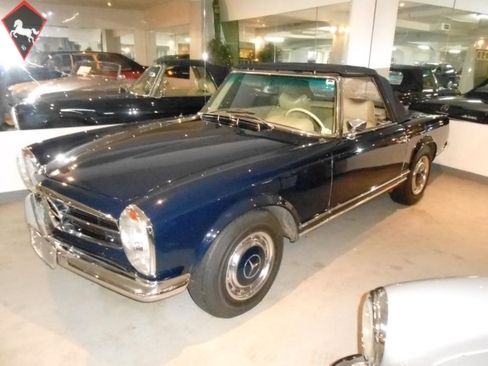












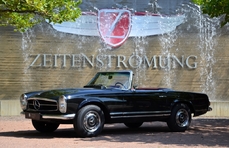
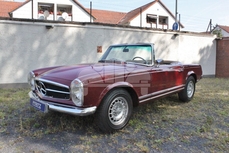
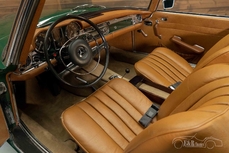
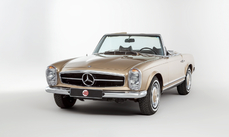
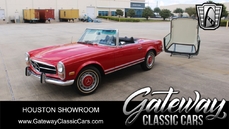
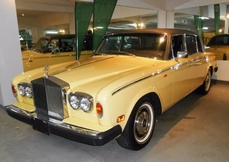
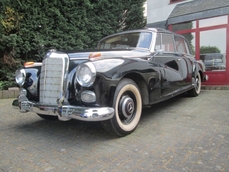
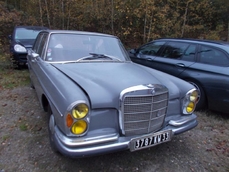
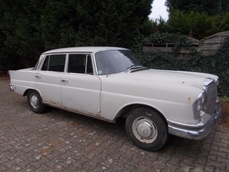
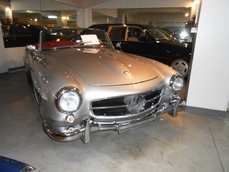

 vars & config
vars & config
 logs & msgs
logs & msgs 39
39 10425.5 KB
10425.5 KB 2403 ms
2403 ms



